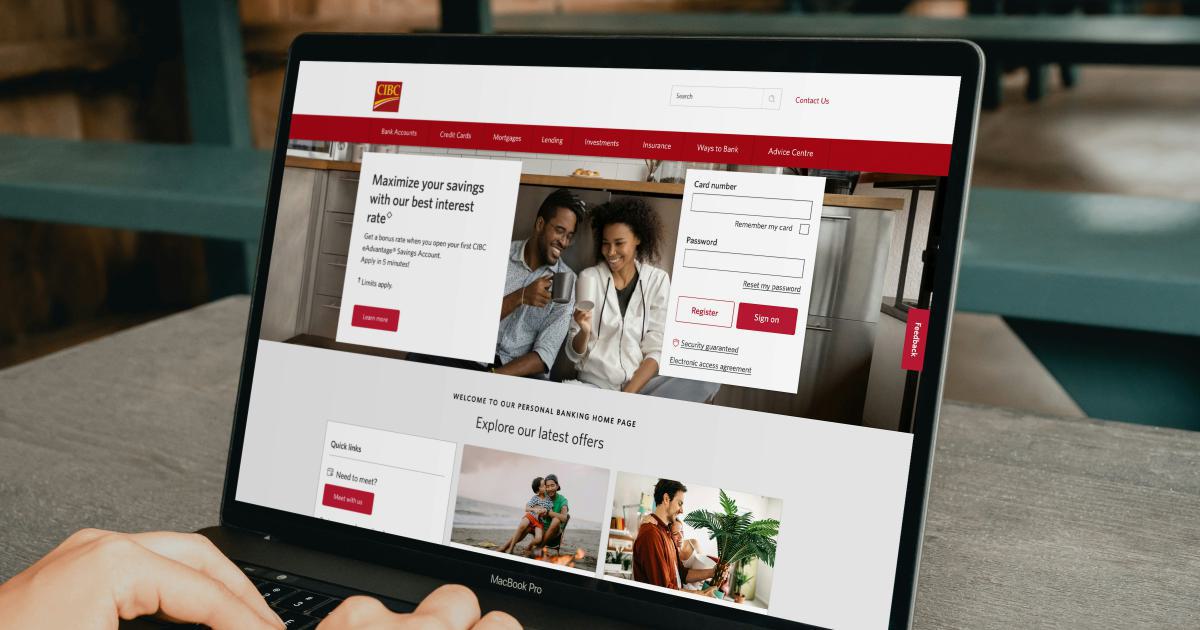Enhance User Experience with Optimized Location Landing Pages


Understanding the Importance of Location-Based User Experience
In today's digital landscape, where competition is fierce and customer expectations are constantly evolving, providing an exceptional user experience (UX) has become a critical differentiator for businesses. One key aspect of UX that is often overlooked is the importance of location-based optimization. Optimized location landing pages can have a significant impact on user engagement, conversions, and overall customer satisfaction.
The Rise of Location-Based User Preferences
As mobile devices have become ubiquitous, users have grown accustomed to seamless, location-aware experiences. They expect websites and applications to adapt to their current location, offering personalized content, accurate information, and relevant recommendations. This shift in user behavior has created a need for businesses to prioritize location-based optimization in their digital strategies.

By tailoring the user experience to the user's location, businesses can create a more personalized and engaging interaction, leading to improved customer loyalty, increased conversion rates, and better overall brand perception.
The Benefits of Optimized Location Landing Pages
Implementing optimized location landing pages can provide a range of benefits for businesses, including:
Improved Relevance and Personalization: Location-based optimization allows businesses to present users with content, products, and services that are directly relevant to their geographical location. This can include local inventory, store information, event listings, and even language and currency preferences.
Enhanced User Experience: Tailoring the user experience to a user's location can result in a more seamless and intuitive interaction. Users are more likely to find what they're looking for, leading to higher satisfaction and increased engagement.
Increased Conversion Rates: By providing users with location-specific information and calls-to-action, businesses can improve the chances of users converting, whether that's making a purchase, scheduling an appointment, or completing a form.
Reduced Bounce Rates: When users are presented with content and offerings that are relevant to their location, they are less likely to quickly leave the website or application, leading to lower bounce rates and improved user retention.
Stronger Local Presence and Brand Awareness: Optimized location landing pages can help businesses establish a stronger local presence and increase brand awareness within specific geographic regions, which can be particularly beneficial for multi-location or franchised businesses.

To fully capitalize on these benefits, it's essential for businesses to develop a comprehensive strategy for optimizing their location landing pages.
Crafting Effective Location Landing Pages
Designing and implementing successful location landing pages requires a multi-faceted approach, considering various elements that contribute to an exceptional user experience.
Identifying Relevant User Locations
The first step in optimizing location landing pages is to identify the key locations that are most relevant to your business and target audience. This may include:
- Primary business locations or store/office addresses
- Nearby cities or regions with a significant customer base
- Areas with high concentrations of potential customers
- Locations with specific demographic or industry characteristics
By understanding the most important locations for your business, you can tailor your landing page content and optimization efforts accordingly.

Personalizing Content and Offerings
Once you've identified the relevant locations, the next step is to personalize the content and offerings on your location landing pages. This can include:
Localized Product or Service Information: Highlight the specific products, services, or inventory available at the user's location.
Local Promotions and Offers: Display location-specific promotions, discounts, or limited-time offers to drive engagement and conversions.
Nearby Store or Office Locations: Provide users with the closest physical locations, including addresses, maps, and directions.
Local Events and Community Involvement: Showcase any local events, sponsorships, or community initiatives that are relevant to the user's location.
Language and Currency Preferences: Adapt the content to the user's preferred language and currency based on their location.

By tailoring the content and offerings to the user's location, you can create a more relevant and engaging experience, ultimately leading to higher conversion rates and stronger customer loyalty.
Optimizing for Local Search
In addition to personalizing the content, it's essential to optimize your location landing pages for local search engine visibility. This includes:
Localized Keywords: Incorporate location-specific keywords and phrases that your target audience is likely to use when searching for your products or services in their area.
Local Schema Markup: Utilize schema.org markup to provide search engines with structured data about your business, including address, contact information, and operating hours.
Google My Business Optimization: Ensure your Google My Business listing is complete and accurate, as this can directly impact your visibility in local search results.
Citation and Backlink Building: Build citations (online directory listings) and acquire backlinks from high-authority, location-relevant websites to improve your local SEO presence.

By optimizing your location landing pages for local search, you can improve your visibility in relevant search results, making it easier for users to find and engage with your business.
Ensuring Mobile-Friendly Design
In today's mobile-centric world, it's crucial that your location landing pages are designed with a responsive, mobile-friendly approach. This includes:
Responsive Layout: Ensure your pages adapt seamlessly to various screen sizes and devices, providing an optimal viewing and interaction experience.
Tap-Friendly Navigation: Make it easy for users to navigate your location landing pages, with large, finger-friendly buttons and menus.
Location-Aware Features: Leverage mobile device capabilities, such as geolocation, to provide users with location-specific information and calls-to-action.
Streamlined Content: Prioritize the most important and relevant information, minimizing clutter and ensuring a clean, distraction-free experience on mobile devices.

By prioritizing mobile-friendliness, you can create location landing pages that cater to the growing number of users who access your content on the go, further enhancing their overall experience.
Leveraging Location Data and Analytics
To continuously improve your location landing pages, it's essential to leverage location-based data and analytics. This can provide valuable insights into user behavior, preferences, and pain points, allowing you to make informed decisions and optimize your pages accordingly.
Gathering Relevant Location Data
There are several sources of location data that businesses can leverage to enhance their location landing pages:
Website and Application Analytics: Utilize tools like Google Analytics to track user behavior, including their geographic location, device type, and path to conversion.
Geolocation Data: Collect location data from user device permissions or IP addresses to tailor the user experience based on their precise location.
Customer Interaction Data: Gather insights from customer service interactions, reviews, and feedback to understand location-specific preferences and pain points.
Competitive Intelligence: Monitor your competitors' location landing pages and marketing strategies to identify opportunities for differentiation and improvement.

By aggregating and analyzing this data, you can gain a deeper understanding of your users' location-based needs and preferences, enabling you to make data-driven decisions and optimize your location landing pages accordingly.
Implementing Continuous Improvement
With the insights gathered from location data and analytics, you can implement a continuous improvement process for your location landing pages. This may involve:
A/B Testing: Conduct experiments to compare the performance of different location-based content, design elements, or optimization strategies.
Iterative Refinements: Regularly review user feedback, behavior metrics, and search performance to identify areas for improvement and make incremental updates.
Localization and Personalization: Adapt your location landing pages to cater to the unique needs and preferences of users in different geographic regions.
Expansion and Scalability: As your business grows and expands into new locations, ensure your location landing page strategy can scale effectively.

By embracing a data-driven, user-centric approach to location landing page optimization, you can continually enhance the user experience, drive higher engagement, and ultimately, improve your business outcomes.
Best Practices for Optimized Location Landing Pages
To ensure the success of your location landing page strategy, it's essential to follow best practices and guidelines that have been proven effective. Here are some key recommendations:
Clearly Communicate Location-Specific Information
Make it easy for users to quickly identify the location-specific content and offerings on your landing pages. This can include:
- Prominent display of the user's current location or nearest store/office
- Clear calls-to-action that encourage users to explore local products, services, or events
- Intuitive navigation that allows users to quickly access location-based content

Leverage Geolocation and IP Detection
Utilize geolocation technologies and IP address detection to automatically determine the user's location and deliver a tailored experience. This can include:
- Automatic redirection to the appropriate location landing page
- Pre-populating location-specific fields, such as address or store hours
- Displaying localized content, pricing, and availability information

Optimize for Localized Search
Ensure your location landing pages are optimized for localized search queries by incorporating relevant keywords, schema markup, and citations. This can help improve your visibility in local search results and drive more targeted traffic to your pages.
Prioritize Mobile-Friendly Design
Given the prevalence of mobile device usage, it's critical that your location landing pages are designed with a mobile-first approach. This includes responsive layouts, touch-friendly navigation, and location-aware features that enhance the user experience on the go.

Offer Seamless Offline-to-Online Integration
For businesses with physical locations, consider ways to integrate the offline and online experiences. This may include features like:
- In-store pickup or curbside delivery options
- Appointment scheduling for local services
- Inventory availability and real-time updates
By providing a consistent and connected experience across digital and physical touchpoints, you can create a more cohesive and satisfying user journey.

Continuously Monitor and Optimize
Regularly review the performance of your location landing pages, analyze user behavior and feedback, and make iterative improvements based on the insights gathered. This continuous optimization process will help you stay ahead of changing user preferences and maintain a competitive edge.
By adopting these best practices, you can create location landing pages that truly enhance the user experience, drive higher engagement, and deliver tangible business results.
Conclusion
In today's digital landscape, where users demand personalized and location-aware experiences, optimizing your location landing pages is a critical strategy for businesses of all sizes. By tailoring the content, design, and functionality of your landing pages to the user's geographic location, you can create a more engaging and relevant experience that drives increased conversions, loyalty, and overall customer satisfaction.
Through a data-driven approach to location landing page optimization, you can continuously refine and improve your offerings, staying ahead of evolving user preferences and maintaining a competitive advantage in your industry. By embracing the power of location-based user experience, you can elevate your digital presence and position your business for long-term success.